Layers of Flavor: Farmers Market Guide to Alliums
Selina Knowles, Communications Coordinator
April 14, 2023
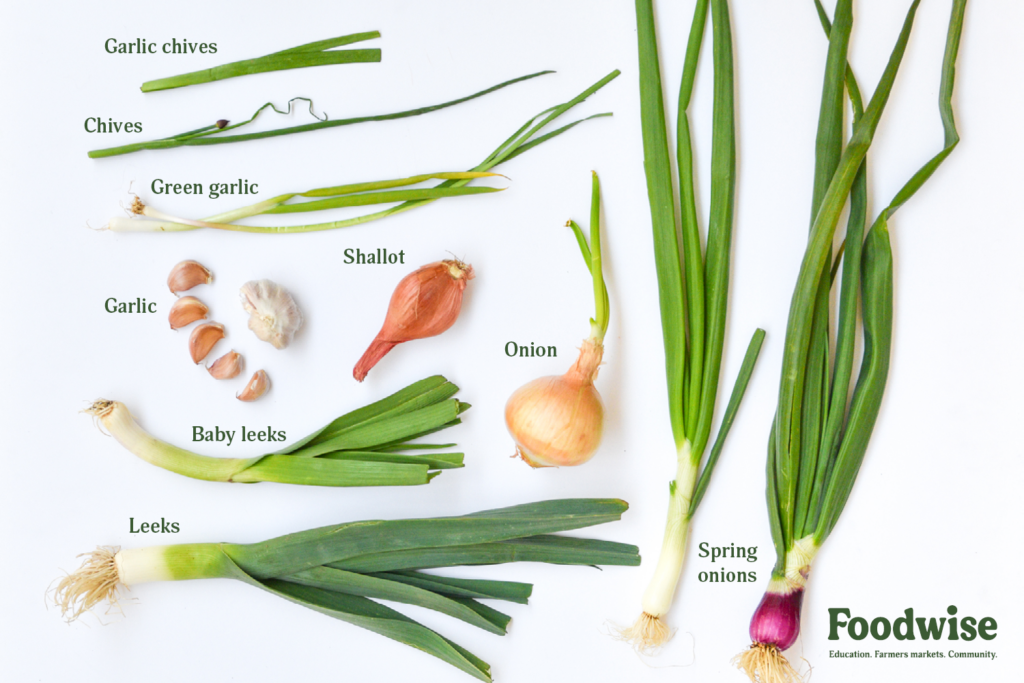
When you visit the farmers market in spring, you’re greeted by a variety of tender shoots, like crisp chives, fresh green garlic, and budding spring onions, all newly emerged from the soil after a long winter. After bringing them home, the mouthwatering aromatics of garlic and onions on the stovetop build the base of a delicious meal. These flavor-boosting bulbs are known broadly as alliums. Here’s a brief guide to ones you’ll find at the farmers market, as well as some tips on how to use them.
Pungent, Healing Perennials
The Allium genus encompasses over 600 different species, including edible varieties like chives, garlic, leeks, onions, and shallots. Garlic and onion are among the oldest cultivated plants, dating back thousands of years. Their origins are believed to be in Asia, the Middle East, and Northern Africa before spreading around the world, cultivated for culinary and medicinal purposes and used in sacred practices. The strong flavor and smell of alliums, which is due to the presence of sulfur compounds, also makes them a natural pest deterrent on the farm.
Alliums are perennial plants, and they can be found at the farmers market year-round. Freshly picked green garlic and spring onions start showing up at the farmers market around March or April, indicating the beginning of their harvest season, which will peak later in the summer, when the mature, fully formed plants are typically harvested. Mature alliums can be cured so that their papery skin tightens and preserves the inside layers to eat in late fall and winter, after the harvesting season has wrapped up and the plant returns to dormancy.
Types of Alliums
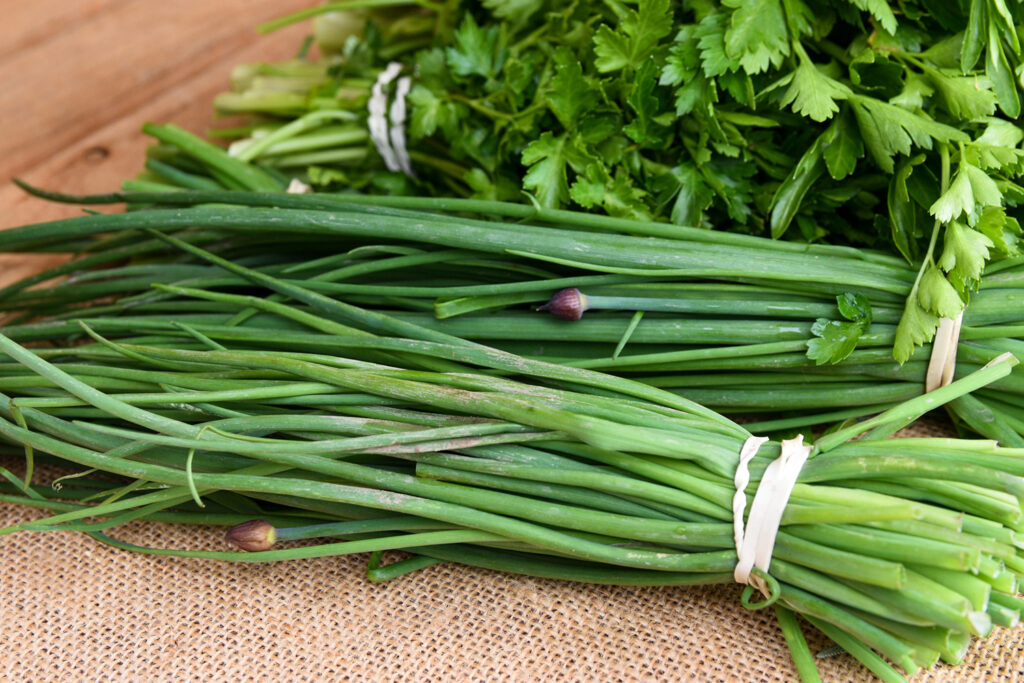
Chives: This flavorful herb is the smallest species of edible onions, with slender leaves that resemble long blades of grass. Commonly chopped up into small pieces, chives add a dose of onion’s pungent flavor to savory dishes, such as soups, fish, and potatoes. At the farmers market in late spring, be on the lookout for chive blossoms, delicate violet flowers that can be used as a garnish, adding a pop of color and a subtle onion flavor to scrambled eggs, quiche, and goat cheese spreads.
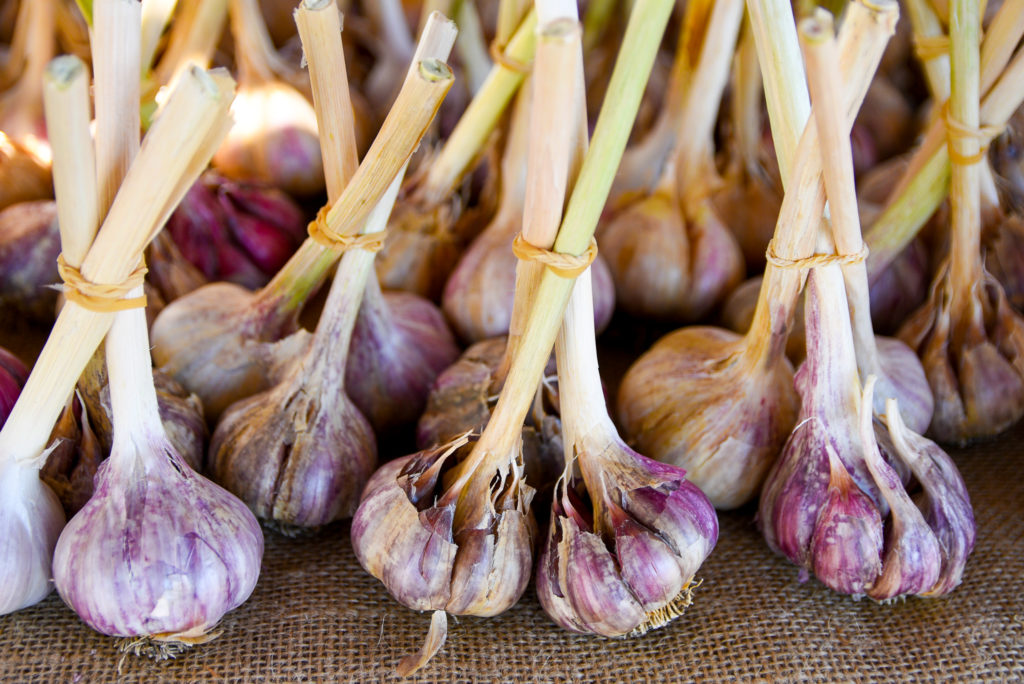
Garlic (mature): Garlic, affectionately referred to as the stinking rose, was traditionally used for health purposes in many parts of the world including the Middle East and East Asia. It was believed to have anti-inflammatory and anti-bacterial qualities. When harvested, the familiar garlic bulbs and their contained cloves are covered in a flaky, white skin that must be removed before cooking. When cooked, garlic boosts the aromatic qualities of any savory dish. You can also grate raw garlic to add a sharp flavor in a salad dressing or slow roast whole cloves in oil for a spreadable garlic confit.
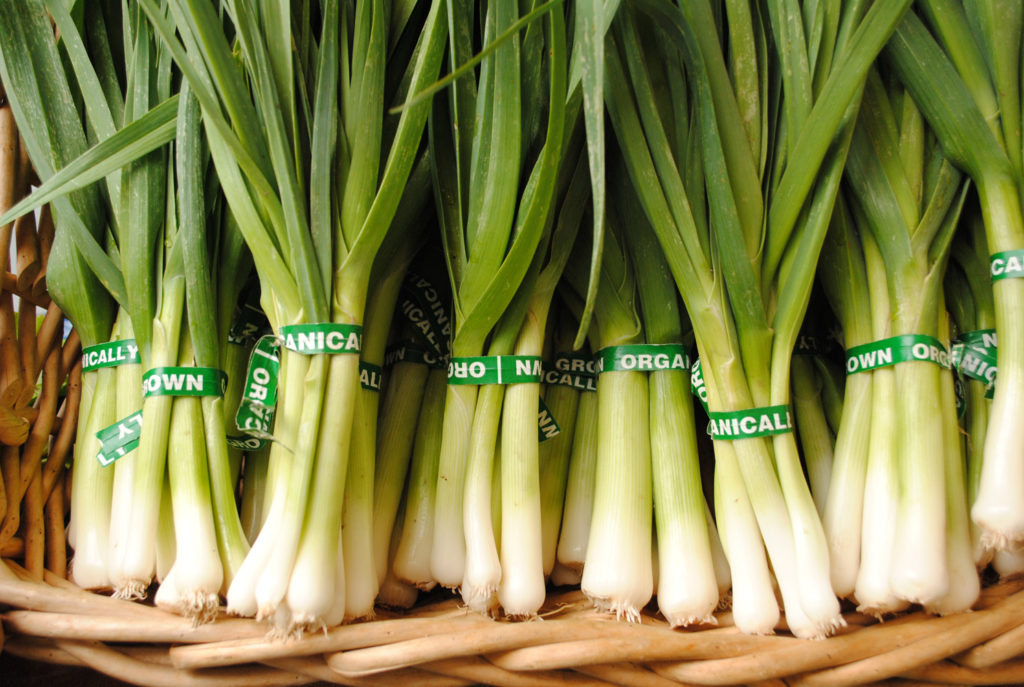
Green garlic: Green garlic is harvested in the spring, before the plant has matured. The white or light-purple bulb resembles that of a green onion, though the green tops are flat compared to the round tops of the green onion. A chef’s favorite, green garlic has a much milder taste compared to matured cloves, and it provides a fresh twist in any recipe that calls for garlic. The plant is edible from the root to the leaves and doesn’t need to be peeled like the mature bulbs do.

Leeks: Rather than forming a tight bulb like the onion, the leek produces a long cylinder of bundled leaf sheaths. The white and light green portions of the leek are most often used, as the dark green portion has less flavor and can be starchy. The tender part of the leeks can help build flavor at the start of cooking savory dishes, similar to onions, but as a milder allium, it can also be enjoyed as a side dish on its own when grilled or roasted.
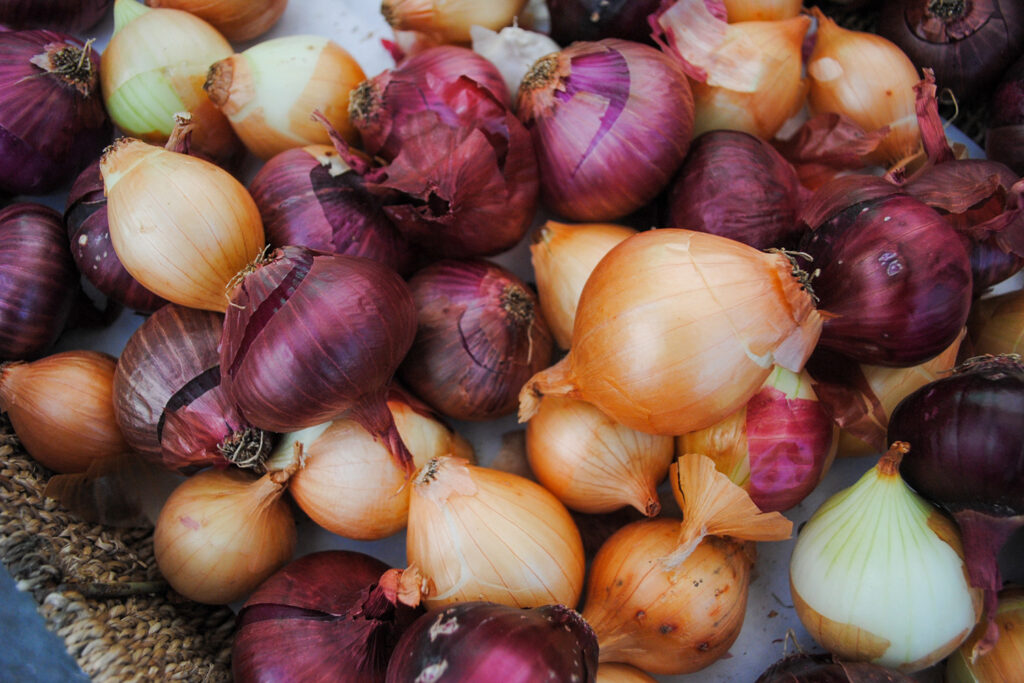
Onions (mature): There are a few common varieties of onions, each with slightly different flavors. Yellow onions are the most common and versatile, with a balance of acidic and sweet. White onions tend to be sharper and are commonly chopped into small pieces and added raw to salsas and chutneys. Red onions’ purple color visually sets it apart from its relatives, although the flavor is similar to that of yellow onions. Red onions are often thinly sliced and added to salads, raw or lightly pickled, as well as salsas.
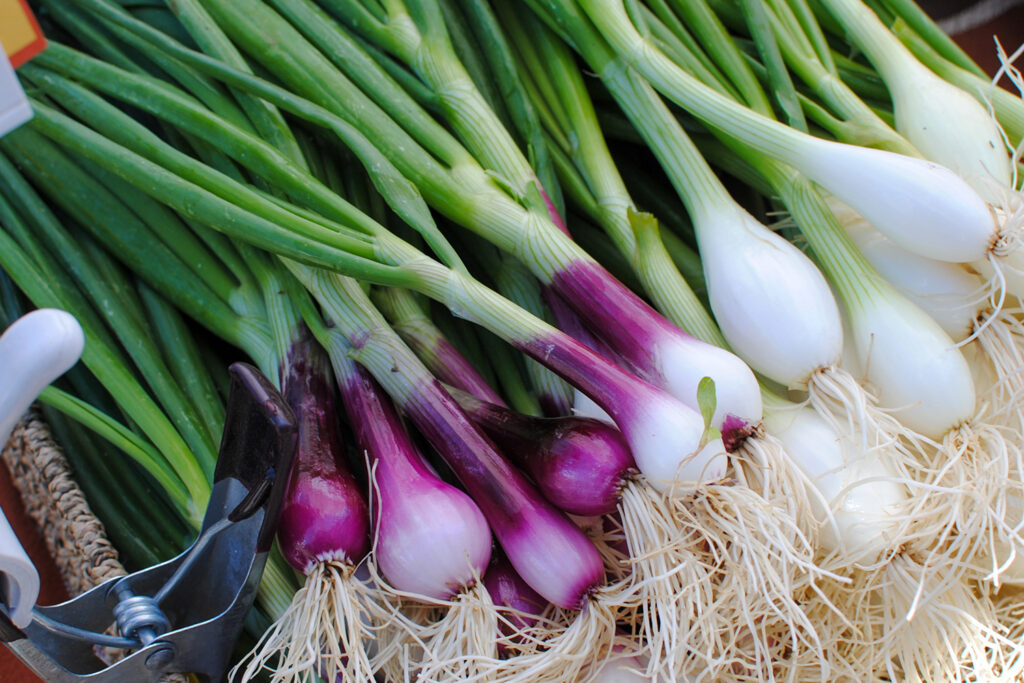
Spring onions: Indicative of early spring, these young onions (which are different from scallions; more on this below) can be found at the farmers market before mature onion bulbs have fully formed. These have a milder, sweeter flavor than mature onions (especially the Calçot variety from Catalonia, available at Allstar Organics) and can be enjoyed raw or cooked. Like green garlic, the green and white parts are both edible. They are a tasty side dish when roasted or grilled, as in cebollitas asadas, a popular Mexican preparation.
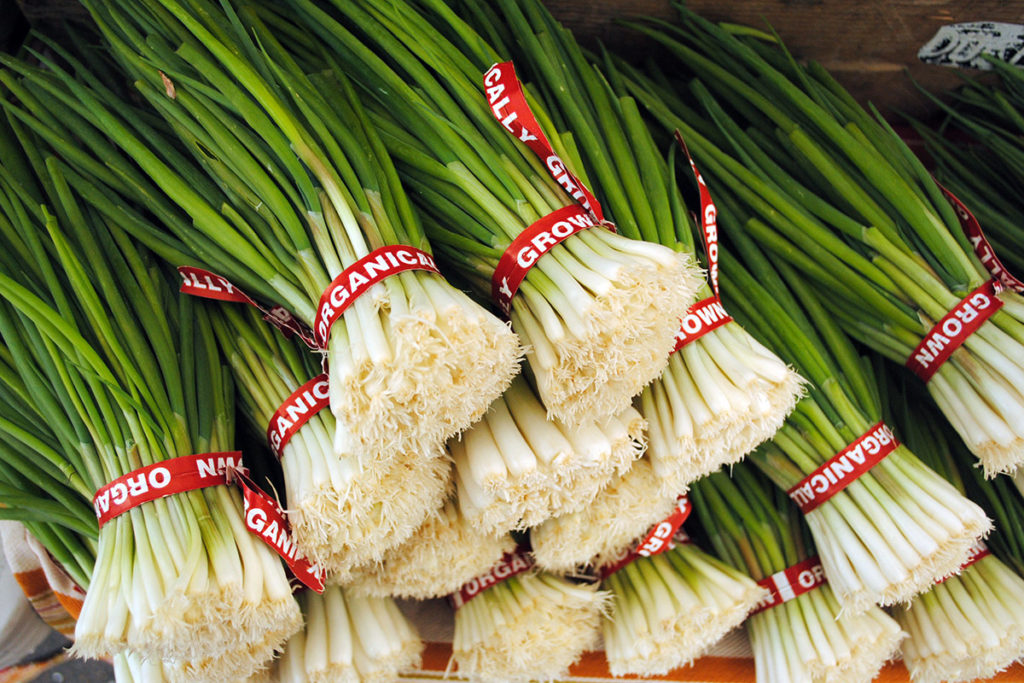
Scallions: Also known as green onions, scallions are not to be confused with spring onions. While spring onions are on track to grow into the mature bulbous onions, scallions are onions with bulbs that never grow bigger. Scallions are commonly used as a garnish and are widely used in Asian dishes, such as scallion pancakes. Chop the white, stockier part of the plant more finely as it’s more concentrated in flavor.

Shallots: Although they grow in clusters of multiple cloves like garlic, shallots taste similar to onions or a cross between the two. Their skin is usually a reddish-brown color with lavender flesh underneath. Their flavor tends to be milder and sweeter than onions, yet still pungent, and for this reason, is a favorite ingredient among chefs. Shallots are often fried to add texture to savory dishes or pickled for a tart topping. In the spring at the farmers market, be on the lookout for spring shallots, with the green tops still on.
Check out our recipe archive for dishes like Asparagus and Green Garlic Soup, Asparagus and Leek Strata, and Spring Vegetable Risotto.
Topics: Culinary, Farmers market, Produce guides, Seasonal, Vegetables
